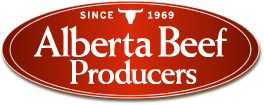
Source: Albert Beef Producers
Project No.: BQU.03.13
Lead ResearcherS: Heather Bruce, Ph.D., University of Alberta Other
ResearcherS: Walter Dixon, Steve Miller, Graham Plastow (University of Alberta), John Basarab (Alberta Agriculture and Rural Development), and Jennifer Aalhus (Agriculture and Agri-Food Canada)
Objectives:
The objectives of this activity are to determine whether dark-cutting carcasses are produced by animal management factors, and whether the ribeye muscle metabolism of dark-cutting carcasses is different than that of normal carcasses.
Background:
Dark cutting is a stressassociated condition that causes beef to have an unacceptable color and shorter shelf life. Dark cutting can reduce carcass value by up to $346 per head, and has become more prevalent in recent years.
What They Will Do:
The influence of animal management factors such as gender, implants, beta-agonists, melenestrol acetate, and transportation practices on dark cutting will be investigated by relating existing historical feedlot records to corresponding carcass data. Factors found to be associated with dark cutting will then be tested in a prospective study using new feedlot and carcass data, and results will be used to develop decision trees to help producers reduce the risk of dark cutting.
The proteomics study will compare glycogen metabolism and protein expressions in ribeye muscle samples collected from normal and dark-cutting carcasses. Carcass data from cattle in Alberta Agriculture and Rural Development and University of Guelph data sets that have been genetically characterized using the 50K SNP chip will also be analyzed to identify DNA sequence differences that may explain the proteomic differences.
Implications of the Research:
Updated decision trees that help feedlot operators effectively reduce the incidence of dark cutting will provide economic benefits for Canadian feeders and packers. Identifying genetic factors that may influence the risk of dark cutting will help to beef quality through genetic improvement of seedstock.









